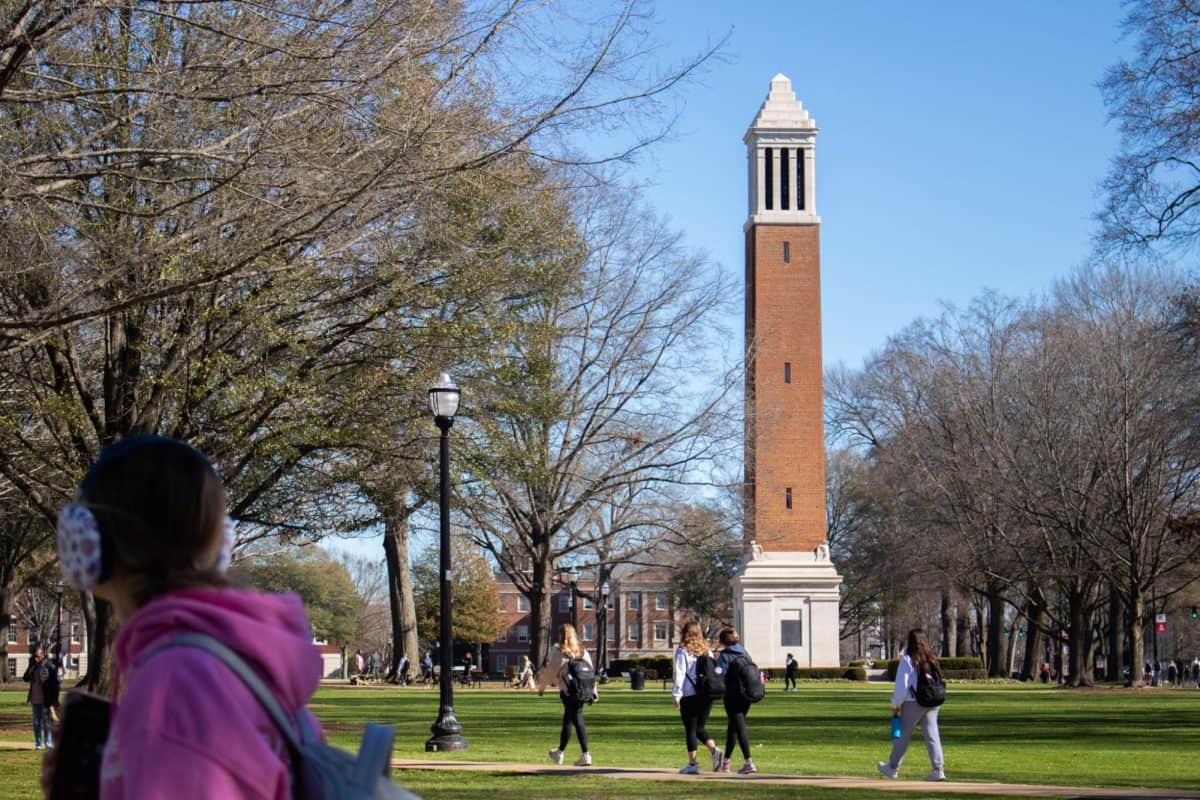The search for a college home is one of the most instrumental decisions a student can make. For our freshman class, this process is still fresh on the mind, having just made the commitment to Alabama months ago. As a junior, I am still asked why I chose to attend the University of Alabama.
Each checklist of ideal college attributes is different, and different characteristics weigh heavier for different people. Logistically, I considered location, majors offered, social scene and scholarship, and these are common influences in the final decision of college attendance for many students.
One characteristic that consistently plays a large part in the decision making process is size. On paper, student to teacher ratio, student involvement and graduation rates are measures of size. Traffic congestion, class registration, athletic seating, housing and parking are more personal measures of a university’s population.
Last year, President Witt set a goal of reaching a 35,000-student population by 2020. His initial goal of 28,000 by 2009 has already been reached, and he has set records with the largest freshman class in University history.
Before President Witt accepted his current position at the Capstone, he served in administration at the University of Texas from 1973 through 1995. During the 22 years Witt served at UT, the student population more than doubled. Texas had a student population of 16,477 in 1960. By1990, it had 37,152 students.
When President Witt arrived at the University of Alabama in March 2003, the Fall 2002 undergraduate population was at 15,892 students. If Witt continues with his plans, the University of Alabama will see the same 20,000 student increase that the University of Texas experienced, in which Witt played a part.
Without a doubt, there are definite positives to an increased student population. More students mean more academic talent. The 2011 freshman class, while being the largest, also contains the most National Merit Scholars that UA has seen yet. And, if Witt plans to follow the same plans as his former employer, Alabama will have the opportunity to become more exclusive with its application process, much like Texas did.
However, reusing the same blueprints for growth is a dangerous game plan. The differences between the University of Texas and Alabama are extensive. Let’s first consider the cities and states of each. Austin, Texas. and Tuscaloosa, Ala. provide two completely different examples of college towns. The economy and size of Austin provides some form of cushion to the influx of students.
While Tuscaloosa does have the classic “college town” vibe, it is not large enough, or ready, to accept a similar increase in people. This is especially true considering President Witt has stated, “The University can grow from where we are now without having to construct any new academic buildings.”
Now, consider parking, housing, traffic and class registration. As flawless as these aspects of our institution are, more students won’t help the pre-existing issues students already have.
But most importantly, a change in size will change the spirit of the University of Alabama. Sure, the possibility of growth could be beneficial in some aspects, and even make UA a more academically prestigious institution. But, much of the reason students love and choose Alabama is its size. At its current size, Alabama is large enough to provide opportunities that only large academic institutions can provide. Things like multiple career opportunities, premier facilities and teaching tools and enough extra- curricular organizations for each student are only going to be available at a school the size of Alabama or larger.
However, unlike the other universities with 40,000 or more students, Alabama students actually have an opportunity to become involved and connected with their school. Once a school reaches a certain size, organizations and groups become more competitive. For example, spirit groups at the University of Texas include a rigorous application process with rounds of interviews.
As idealistic as President Witt is about our population increase and the changes that will come with it, let’s consider a more realistic approach. Let the University of Alabama keep the charm that so many of us, and students before us, fell in love with. Allow Tuscaloosa to naturally grow as a college town, rather than be force fed a population it cannot handle in such a short amount of time.
There are ways to build a University without building numbers. Instead of lowering our standards to raise our numbers, how about we raise our standards and let the numbers fall in line on their own.
SoRelle Wyckoff is a junior majoring in history and English. Her column runs weekly on Mondays.






